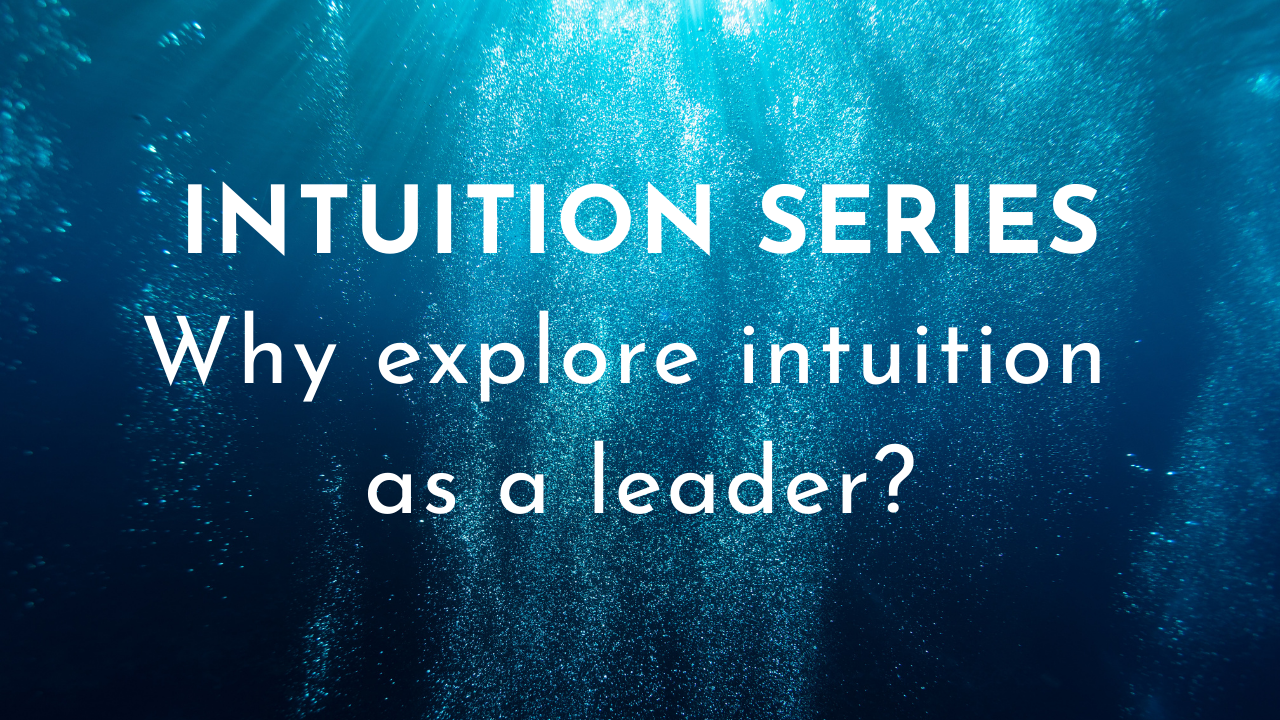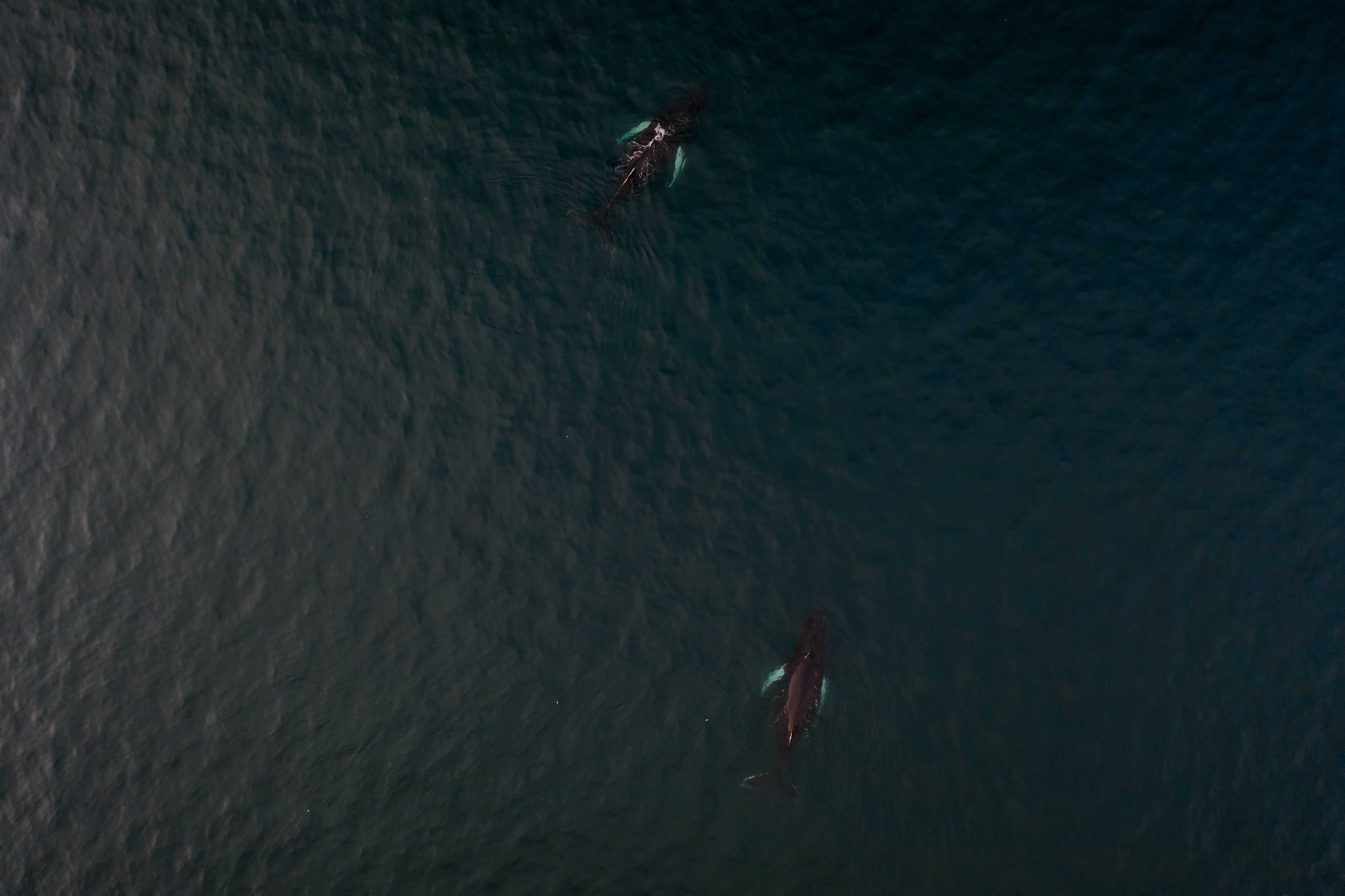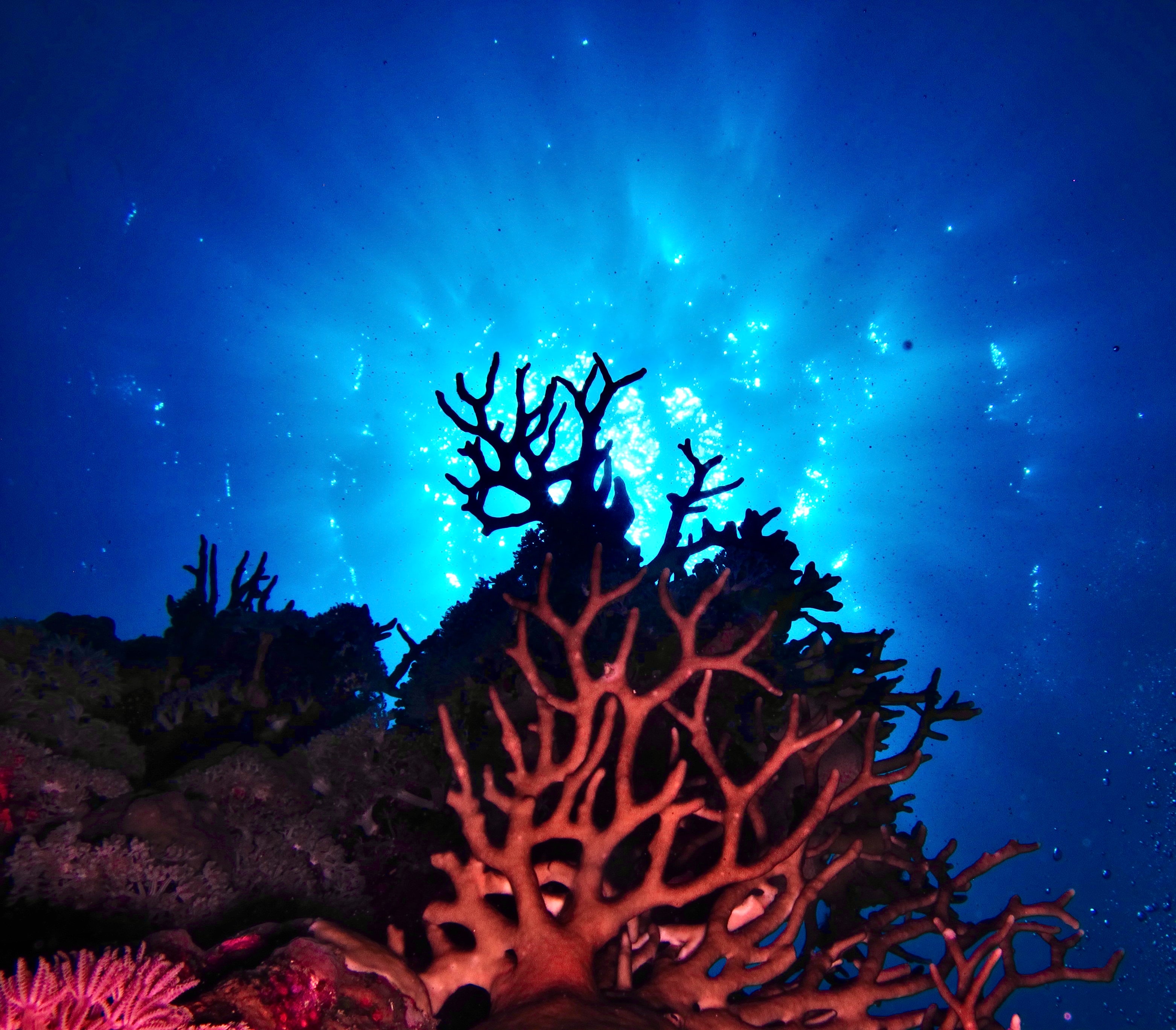Part 1 - Why explore intuition as a leader?
Jan 24, 2022
Practically speaking…
Intuition is a source of power and I want to make it more accessible to leaders. As we practice living with our intuition we become more whole, as family members, as partners, as teammates and as whole human beings seeking to do good in the world.
I have been exploring the depths of intuition since 2017. Both academically as part of completing my Masters in Positive Psychology & Org Development at Weatherhead School of Management as well as in the field with client-leaders looking to transform culture and introduce more sensing-based capacities into their organizations.
Throughout this series, I surface the latest research as well as practical exercises, experiments and sensing activations that you can use to come into deeper contact with your intuitive sensing.
Topics I’ll touch on include:
- The Science of Intuition
- How to define intuition
- How intuition plays out individually and in group dynamics
- How to be realistic about intuition and learn its power AND shadow-sides
- The Craft of Using Intuition
- How to come into contact with your intuition as a sensation (rather than a thought)
- How to better use intuition in your (and your teams) decision-making
- How to sit with the discomfort of depending on your intuition
- How to dismantle the organizational bias we have against intuition
- How to create sovereign spaces for your intuition to thrive
- How to establish norms and language for talking about and externalizing intuition at work
- How to work on your inner-game of trusting your “gut
- How to use intuition in the practice of sensing-based business
Why I care about intuition
Commiting to building a better earth requires the leaders of the world to refine this core sensing-based skill. Without a deeper relationship with our intuition we cannot answer questions like:
- How can I tune into intuition reliably when it feels like it shows up at random?
- How can I access my own sources of deep, inner knowing?
- How can I better use my intuition when navigating ‘never-before-seen’ circumstances?
- How can I make decisions at work based on intuition when my work culture sees “good decisions” as data-driven rather than decisions based on feeling or sensing?
- How can I use intuition to project the unfolding act of new possibilities in my imagination and rally entire teams and organizations behind that vision?
These questions are so important to me I dedicated my Master’s field project in 2018 and 2019 to ask them. As a candidate for my degree in Positive Psychology and Organizational Development, I dove into the latest science on this topic as well as being in conversation with eight experienced innovation decision-makers.
These leaders came from seven different organizations ranging from consulting, technology, sports apparel, healthcare, and start-up environments. The organizations they represented were high-velocity environments with high degrees of innovation activity.
I chose these folks because I wanted perspectives that came from a context of highly innovative organizations in rapidly developing circumstances.
For most of this series, I’ll aim to speak plainly and to make these findings as accessible as possible to leaders seeking to deepen their relationship with sensing as a means of navigating uncertain futures.
Understanding the Genius of Intuition

“TO UNDERSTAND THE GENIUS of the ancient Polynesians, you must begin with the fundamental elements of the Polynesian world: wind, waves, clouds, stars, sun, moon, birds, fish, and the water itself .”
Nainoa Thompson
In addition to being the namesake of our organization, wayfinding is also a staggeringly gorgeous navigating skill developed by ancient Polynesians. More on why founder and magnificent teammate, Larissa Conte chose this as our namesake can be found here.
For now, let’s just use the metaphor.
Just like ancient (and contemporary) Polynesians who use the signals of wind, waves, clouds, stars, sun, moon, birds, fish, and the water to navigate, so do our organizations use certain signals and cues.
Rather than reading the signals of nature, organizations read revenue, overhead, sales quotas, conversion rates, average deal size, retention numbers, brand sentiment, turnover, and job satisfaction to make better decisions, track progress, and catch problems.
Increasingly, these signals and cues alone are insufficient for the waters that leaders are being asked to navigate. These waters might sound like:
- Design inclusive cultures with decentralized authority and power structures
- Digitally transform to delight customers and produce more efficient operations
- Find ways your organization can play a role in addressing climate change and advocate for social justice
- Deliver innovative, organic growth in the midst of a global pandemic
- Attract and retain talent during the largest talent shift in our lifetime
Increasingly the role of leader/CEO is evolving. Beyond being responsible for leading talent, setting strategy, championing culture, and vision CEO’s in a 2021 Deloitte Survey described their role as:
- Chief morale officer. Chief culture builder. Chief strategist.
- Chief clarity officer. Owner of the people agenda. Visionary and strategist.
- One part coach, one part philosopher, one part execution leader.
- Building collective intelligence. Making our organization at ease with complexity.
- Create the conditions for other leaders to unleash their superpowers.
- Run the complaint department and create the aspiration mojo.
In many ways, the modern organization is a vast unknowable world. How are we to find our way and make sense of the unknown? (and help our partners do it too?)
This is the genius in intuition. This is the genius in wayfinding.
Wayfinding with intuition enables us to wade into a rich unknowable world and build rich experiences along the journey. That is, deal with whatever unexpected things that may happen using tools that themselves were unexpected recombinations of prior experiences and intuitive sense-making.
Now that we've explored what makes intuition powerful, let's explore a bit about what intuition actually is.

What is Intuition?
Intuition, gut feeling, hunches, 'having a feeling' - these are all words that start to catch the scent of a very real ability we have evolved over millennia to help us make the right decision, without fully knowing how we know. That ability is intuition.
It’s a Feeling.
More than anything, intuition is a feeling. In his masterwork, The Spell of the Sensuous: Perception and Language in a More-Than-Human World, David Abrams does an incredible job explaining why it’s important for something to “make sense”:
“A story must be judged according to whether it makes sense. And 'making sense' must be here understood in its most direct meaning: to make sense is to enliven the senses. A story that makes sense is one that stirs the senses from their slumber, one that opens the eyes and the ears to their real surroundings, tuning the tongue to the actual tastes in the air and sending chills of recognition along the surface of the skin. To make sense is to release the body from the constraints imposed by outworn ways of speaking, and hence to renew and rejuvenate one's felt awareness of the world. It is to make the senses wake up to where they are.”
Intuition as embodied sensing. Most definitions of intuition out there have at least one thing in common. They describe intuition as being associated with an “affective charge”.
That’s a fancy way of saying, it’s knowing that comes with feeling.
An affective charge is anything that's emotional, sensory or somatic. This is something you feel, not think. Through my research and conversations with top innovators across North America, these sensations were described as:
- Hair standing on the back of your neck
- Gut feelings
- An 'aha' sensation
- 'Lightbulb' moments
- Sense of relief, lightness, or heaviness
- Weight on your shoulders
- A 'knowing'
But What’s the Definition?
A cautionary note on definitions. Having a shared and agreed-upon definition helps us have a broader conversation. Our rational, analytical minds are hungry for this kind of linguistic structure that takes the unknowable world and organizes it into neat compartments.
Like any norm in a culture, society or organization, shared language helps deepen our understanding of a thing and our relationship with it.
The shadow-side of a definition that is unchanging is it risks invalidating so much of what we still don’t understand. Further, a single static definition risks invalidating how intuition might present itself in your own sensing.
So in short, I invite you to stay connected to what YOU experience when you recall the times when you’ve come into contact with your intuition.
Landing a Definition We Can Work With
The definition I choose to use when I talk about intuition is this:
Intuition is a process of rapidly recognizing things without knowing how we do the recognizing, which results in affectively charged judgments.
This definition allows us to both ask specific questions of ourselves and our teammates and it allows us to possibly measure specific moments in time in our lived experiences.
Beyond my definition, many scholars have made efforts to nail down a single definition.
Scholars can’t agree. A workable and agreed-upon definition of intuition has been mostly elusive to researchers. One reason is this concept sits at the intersection of a number of fields: neuroscience, economics, cognition, psychology, behavioral decision science, management.
Where some definitions are too specific (eliminating insights from other disciplines) others are too broad (either being too conceptual or too inclusive).
At the core of the intuition debate. Among the broad range of definitions that exist for intuition, the debate is fueled through four main dialogues.
- What exactly is the information we come to know through intuition?
- What is the source(s) of that information?
- What is the process or channels through which that information is translated into knowing?
- How does the information become available to us in specific contexts and not others? (E.g. making decisions, solving problems, or entering into creative processes)? (this is the most elusive to researchers)
What intuition is not
Sometimes to know a thing is to know what it is not. While intuition may be many things it’s important to know that instinct, insight, heuristics, and empathy are not intuition. While they are all sensing based-practices and they often are experienced in relationship with intuition, they themselves are not intuition.
Instinct - These are biologically hard-wired reflexes. For example most of us are pretty good at acting on the fly: swerving to avoid an obstacle in the road, ducking to keep from being hit, pulling away from a hot stove.
Insight - Often a lengthy process (as opposed to a more immediate one) that begins with
deliberate analytical thinking even though the end result may appear to be intuition. With insight, the logic and the path to the end result is known at the end of the process, which is not the case in intuition.
Heuristics - These are rules-of-thumb that can be applied to guide decision-making based on a more limited subset of the available information. Because they rely on less information, heuristics are assumed to facilitate faster decision-making than strategies that require more information. Examples of heuristic include making an educated guess, working backward, trial and error.
Empathy - Empathy is defined as understanding another person’s experience by imagining oneself in that other person’s situation: One understands the other person’s experience as if it were being experienced by the self, but without the self actually experiencing it. A distinction is maintained between self and other.
Try This: Come into Contact With Your Intuition
Maybe you listen to your intuition often. Maybe you used to be in conversation with your intuition but it’s been a while.
Wherever you are, here’s a simple exercise for you to come into contact with your intuition.
- Find yourself a quiet space where you can be in contemplation and presence with yourself. Make sure to loosen any tight clothing or anything that might be a distraction.
- Make three columns on a piece of paper
- Start with column #1: Moments
- Think back to moments in your life where you experienced a really strong feeling. These feelings are less an “ugh I really ‘should’ do that thing because of other peoples expectations” (like going to class in high school) and more of a “that thing will not stop scratching at my awareness, something about it feels so right for me” (like asking a romantic interest out on a date). These moments could have been strong, full-body YESs or clear and committed NOs that helped you journey closer to yourself.
- As you locate the moments, list them out
- Move to column #2: Locations
- For each moment, bring yourself back to the specific memory you have of experiencing the feeling. Try to notice if the feeling had a specific location relative to your body. Maybe it was in your gut, your chest, the back of your neck. Maybe you experienced its location as somewhere behind or in front of you. Wherever the feeling was located, put that in column two.
- Move to column #3: Sensations
- Now describe the feeling itself. Was it an emotion? A pressure or lightness? Did it feel like a vibration or a stillness?
- Whatever the feeling was, record that in the same row for each moment.
- Track Patterns
- Do you notice any trends?
- Were certain types of decisions more or less likely to have a certain sensation in a certain location?
- When was the most recent time you’ve experienced similar sensations?
This is the beginning of coming into contact with the way YOUR intuition expresses itself through your sensing. More exercises to come in future articles. For now, start to tune your awareness to these sensations in your day-to-day life. Where might your intuition be trying to speak to you that you maybe weren’t listening?
Upcoming topics we will explore include:
- What do we sense when we feel intuition?
- What does intuition decision-making look like?
- Intuition as an essential ingredient at the front-end of innovation
- How language helps and hurts: intuition as a "soft skill"
- How can we make workplaces inclusive for intuitive leaders and teams?
- Intuition as a source of wisdom when wayfinding through the chaos







